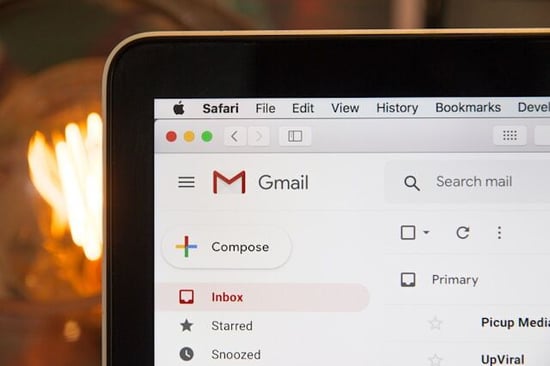How NPs Can Use Email to Attract and Retain Patients

Nurse Practitioners (NPs) increasingly seek innovative, cost-effective methods to engage with patients and grow their practices. When used strategically, email marketing offers one of the highest returns on investment among digital communication tools.
It allows NPs to maintain a direct, ongoing relationship with patients, providing timely updates, educational content, and personalized care messages. This medium is particularly effective in building trust and staying top-of-mind among existing and potential patients.
Email also serves as an equalizer for small and independent NPs. Without the massive marketing budgets of hospital systems, NPs can still compete by delivering value-driven communication straight to the inboxes of their target audience. A well-maintained email list becomes a powerful asset, fostering long-term patient engagement.
More importantly, email enables data-driven customizsation, which enhances the relevance and impact of each message sent.
In an era where healthcare choices are influenced by convenience, accessibility, and consistent communication, email marketing can be a critical differentiator. Patients are likely to remain loyal to providers who consistently stay in touch and offer helpful information. NPs who master this communication channel can build a stronger practice foundation rooted in ongoing engagement and patient satisfaction.
Building and Segmenting an Email List Effectively

An effective email campaign begins with a solid, segmented list. NPs should prioritize ethically collecting emails and ensuring consent is obtained during patient intake or via opt-in forms on their websites.
Incentives like free health checklists or appointment reminders can increase sign-ups. It's crucial that the list only includes individuals who have expressed genuine interest, as sending unsolicited emails can damage reputation and violate HIPAA regulations.
Segmentation allows NPs to categorize their patients by relevant attributes such as age, health conditions, or appointment history. This approach ensures that each group receives content tailored to their specific needs, increasing the likelihood of engagement. For example, younger patients might benefit from wellness tips or vaccine reminders, while older patients may appreciate chronic disease management updates.
Maintaining an organized and updated email database is essential. Regular audits can remove inactive addresses and update existing entries to reflect current patient information. By keeping the list clean and segmented, NPs can achieve better open rates, lower bounce rates, and, ultimately, a more engaged patient population. These foundational steps are essential for building a reliable communication channel.
Creating Content That Educates and Inspires Trust

Quality content is the cornerstone of any successful email marketing effort. NPs must strike a balance between professionalism and approachability, ensuring that their messages are medically sound yet easy to understand.
Educational emails that explain health topics outline preventive care or provide seasonal wellness advice can position NPs as trusted advisors. This establishes authority while offering genuine value to patients.
One effective tactic is aligning content with patients' common questions or concerns. For instance, emails discussing nutrition tips, managing blood pressure, or coping with stress resonate widely and encourage patient interaction. Including clear calls to action, such as scheduling an appointment or following the NP's blog, helps guide readers toward deeper engagement.
Thoughtfully written emails that address patient needs and timely health topics can significantly enhance engagement and retention. Nurse practitioners should regularly evaluate and refine their messaging strategies to ensure the content remains relevant and supportive.
Incorporating effective patient outreach through email allows practices to connect with their audience consistently and meaningfully. Effective communication plays a key role in shaping a positive perception of the practice.
Automating Communication Without Losing the Personal Touch

Automation tools can significantly streamline email communication for busy NPs. Platforms like Mailchimp, Constant Contact, or specialized healthcare CRMs allow NPs to schedule appointment reminders, follow-ups, and health tips in advance. These systems ensure the timely delivery of relevant messages, reducing the administrative burden and minimizing missed connections with patients.
Despite the efficiency gains, maintaining a personal touch is crucial. Personalized subject lines, addressing patients by name, and segment-specific content can make automated emails feel more human. Including a brief note from the NP or sharing a personal anecdote can help strengthen the patient-provider relationship, even in a digital format.
Patients are more likely to engage with emails that reflect familiarity and care. Automation should not be generic or impersonal. By blending efficiency with empathy, NPs can ensure their email marketing campaigns build rapport and trust, even at scale. Consistency in tone and content relevance also reinforces the NP’s commitment to individualized care.
Promoting Services and Booking Opportunities

Email provides a discreet and respectful way to inform patients about available services, special programs, or new offerings. For instance, NPs can announce the addition of telehealth visits, the availability of seasonal flu shots, or wellness packages. These updates keep patients informed and can drive appointments without resorting to overt advertising.
Promotional emails should be thoughtfully timed and include a clear call to action. Encouraging patients to book early or take advantage of limited-time offers can instill urgency while maintaining professionalism. Embedding booking links or patient portal access directly in the email simplifies the process and reduces friction.
These emails mustn’t overshadow the core mission of patient care. Promotional content should be balanced with educational and supportive messaging to ensure a well-rounded approach. When patients feel they are being offered something genuinely beneficial rather than sold to, they are more likely to respond positively and engage consistently.
Re-engaging Inactive Patients Through Targeted Outreach

Over time, it is natural for some patients to drift away. Email campaigns can play a key role in reactivating these individuals. A well-crafted re-engagement email might include a friendly check-in, a reminder of overdue wellness exams, or an invitation to return for a specific service. The tone should be warm and encouraging, not punitive.
NPs can analyze their email data to identify patterns of inactivity and tailor messages accordingly. For example, if a patient hasn’t visited in over a year, a personalized message highlighting the importance of annual checkups can be a gentle nudge. Including testimonials, updates about practice improvements, or new services can reignite interest.
Effective re-engagement depends on timing and tone—messages sent too frequently or too soon may be ignored, while overly aggressive language could alienate recipients. The goal is to show genuine concern for the patient’s well-being and make the return process as simple and welcoming as possible.
Measuring Success and Adapting Strategies
Data is the backbone of a successful email marketing strategy. NPs should regularly review open rates, click-through rates, and unsubscribe patterns to understand what resonates with patients. These metrics offer real-time feedback and highlight areas for improvement. Adjusting subject lines, send times, or content format can yield significant performance improvements.
Surveys embedded within emails can also provide direct insight into patient preferences. Questions about content relevance, desired topics, or communication frequency help NPs refine their approach. Patients appreciate when their feedback leads to more tailored and respectful communication.
Ultimately, email marketing should evolve in response to patient behavior and needs. Static strategies may lose effectiveness over time, but a flexible, data-informed approach ensures sustained engagement. NPs who treat email as a dynamic part of their care model will be better equipped to meet the needs of a modern, digitally engaged patient base.